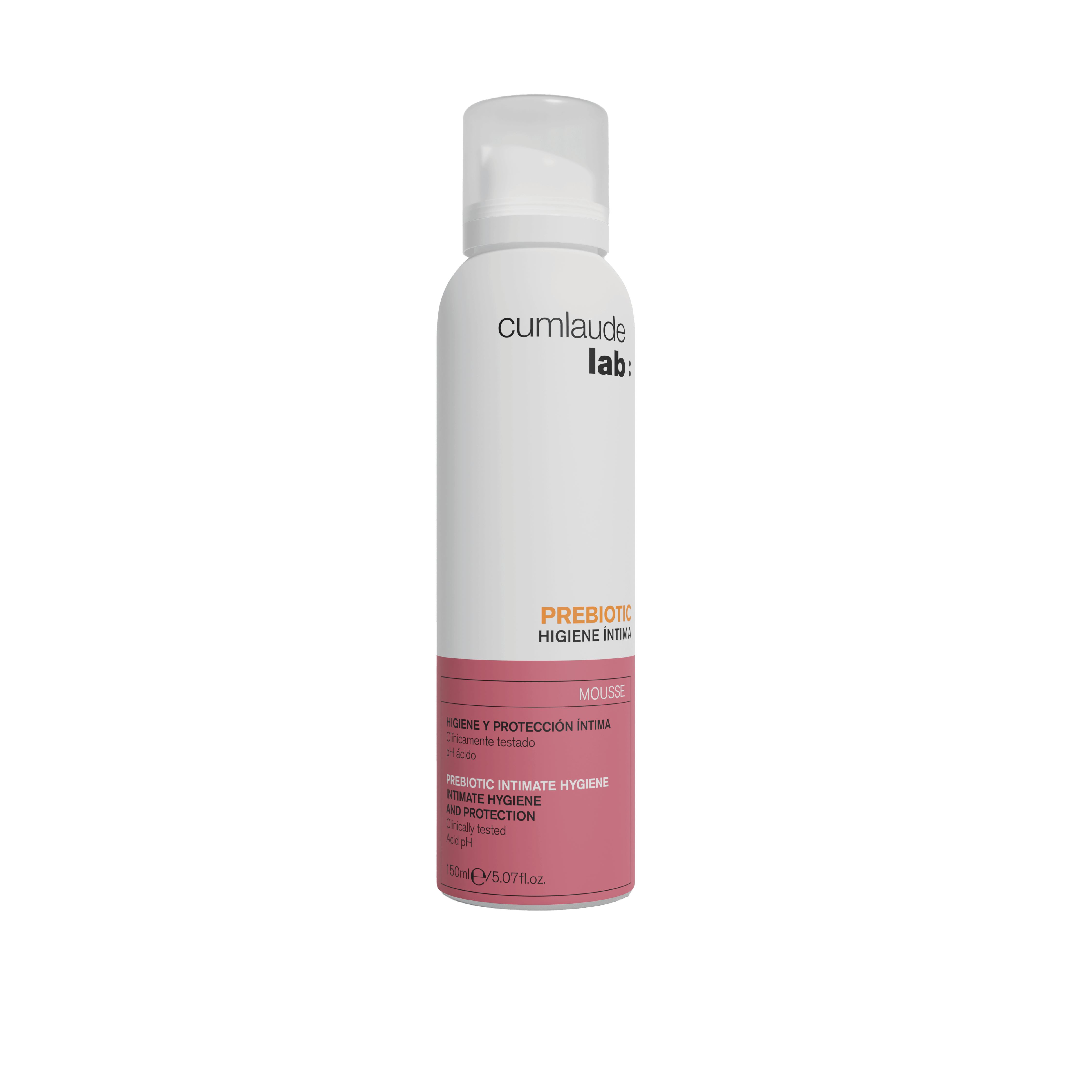- Intimate Health
What is vaginal pH? Everything you need to know
- 30/07/2025
- ARTICLE
- 5 MIN
Vaginal pH is a key factor in female intimate health. But do you know what it is exactly? Why is it so important to keep it balanced? How do I know my intimate pH is in the optimal range?
In this article, we’ll uncover all the secrets of pH, explain its importance for the health of your vagina, and give you practical and effective tips to keep it in balance.
What is vaginal pH?
pH is a measure that indicates the acidity or alkalinity of the vaginal environment. It is measured on a scale of 0 to 14, where 0 is the most acidic value and 14 the most alkaline. A balanced vaginal pH is essential for a healthy vagina, as it acts as a natural protective barrier against infection and discomfort. An out-of-range pH can alter the vaginal flora, allowing harmful bacteria (when it’s too high) or yeast to proliferate (when the pH is too low), which can lead to infections such as candidiasis or bacterial vaginosis.What is the right intimate pH level?
Intimate pH varies throughout a woman’s life:- Childhood: Vaginal pH is neutral (around 7)
- Reproductive age: The pH becomes more acidic, ranging from 3.8 to 4.5. This acidic environment is ideal for the growth of beneficial bacteria such as lactobacilli, which protect the vagina.
- Menopause: Vaginal pH tends to rise again, approaching a neutral value (7) due to decreased estrogen levels.
Factors that can alter vaginal pH
There are several factors that can influence pH:- Hormonal changes: Hormonal fluctuations during the menstrual cycle, pregnancy, or menopause can affect vaginal pH.
- Inadequate intimate hygiene: Excessive washing or the use of harsh products can kill beneficial bacteria and alter the pH.
- Tampons: They can absorb vaginal discharge and protective bacteria.
- Underwear that is too tight/not very breathable: Promotes moisture and the growth of bacteria.
- Lowered defenses: A weakened immune system can make the vagina more susceptible to infection.
- Menstruation: Menstrual blood has a higher pH (alkaline), which can temporarily raise the pH.
- Sexual intercourse: Semen has an alkaline pH level of between 7.1 – 8, which, together with some lubricants that are not neutral pH, could alter the vaginal pH when having penetrative sex.
- Medication: Antibiotics can kill not only harmful bacteria, but also beneficial bacteria responsible for regulating pH levels.
- Stress: It can acidify the body, and potentially the vaginal area.
Signs of an unbalanced vaginal pH
When your level becomes destabilized, some of the following symptoms may appear:- Vaginal itching or irritation
- Burning sensation when urinating
- Unusual vaginal odor (often described as a “fishy” odor)
- Changes in the color or texture of vaginal discharge
Vaginal infections related to pH level
Altering the pH balance affects the natural barrier function of our vagina, making us more vulnerable to contracting vaginal infections. The most common discomforts related to an unbalanced pH level are:- Bacterial vaginosis: caused by an overgrowth of bacteria such as Gardnerella vaginalis, associated with a higher vaginal pH (alkaline).
- Vaginal Candidiasis: Infection with the fungus Candida albicans, often related to a lower pH (acidic) or a weakened immune system.
Tips for a balanced vaginal pH
To maintain a healthy pH, follow these tips:1. Gentle intimate hygiene
- Wash the intimate area with warm water and a specific intimate soap for the intimate area, without fragrances or irritating ingredients and neutral pH.
- Use your bare hands instead of sponges or other objects.
- Always wipe from front to back to prevent the spread of bacteria from the anal area to the vagina.
- Avoid douching, as it removes the natural vaginal flora.
2. Suitable underwear
- Opt for underwear with breathable fabrics, preferably cotton
- Avoid very tight clothing
- Change wet underwear immediately
- Don’t wear underwear to sleep
3. During menstruation
- Consider alternatives to tampons, such as menstrual cups or organic cotton pads
- Change menstrual products often
- Wash the area frequently with warm water several times a day
4. Healthy habits
- Drink plenty of water
- Eat foods rich in probiotics (yogurt with live cultures) and prebiotics (fruits, vegetables, whole grains) to support vaginal flora
5. Safe sex
- Use a condom to protect yourself from sexually transmitted infections
- Use water-based lubricants with neutral pH
- Wash the area with warm water after penetrative sex
6. Visit your gynecologist regularly
Schedule regular gynecological checkups to detect and treat any problems early. Maintaining a balanced pH level is critical to a healthy vagina. By following these recommendations and paying attention to the changes in your body, you will be able to maintain a balanced vaginal pH and prevent vaginal infections.Some frequently asked questions about pH that may interest you
- What is the difference between vaginal pH and vaginal flora? Vaginal pH is a measure of acidity, while vaginal flora is the set of microorganisms that live in the vagina.
- Can I use vinegar to balance my vaginal pH? No, it is not recommended to use vinegar, as it can irritate the vagina and alter the vaginal flora.
- Is it normal to have vaginal discharge? Yes, it is normal to have vaginal discharge, but if it changes color, smell or texture, it is important to consult the gynecologist.
- How do I know if I have bacterial vaginosis? Symptoms of bacterial vaginosis include vaginal discharge with a “fishy” odor, itching, and burning. It is important to consult the gynecologist for proper diagnosis and treatment.
- How can I prevent vaginal yeast infections? To prevent yeast infections, avoid tight clothing, wear cotton underwear, avoid douching, and eat foods rich in probiotics.

Prebiotic Intimate Cleansing Mousse
Gentle cleansing mousse with prebiotics for daily intimate care and protection

